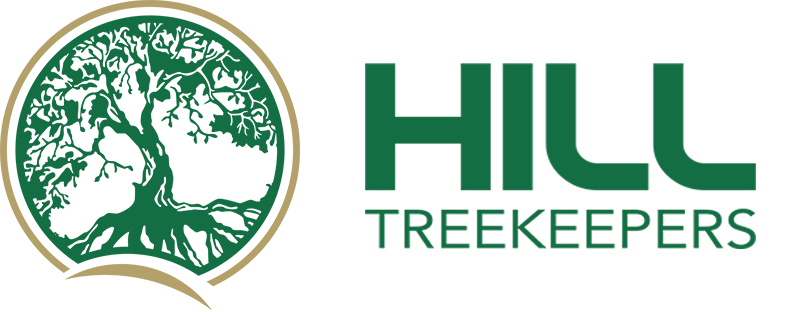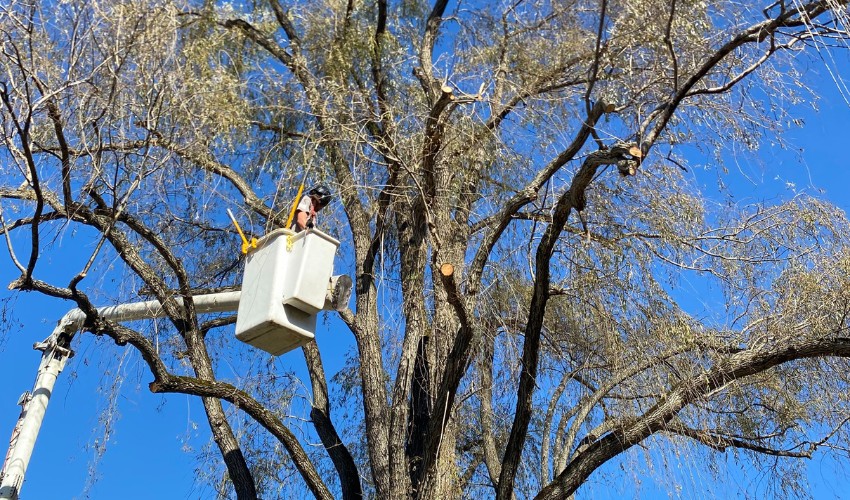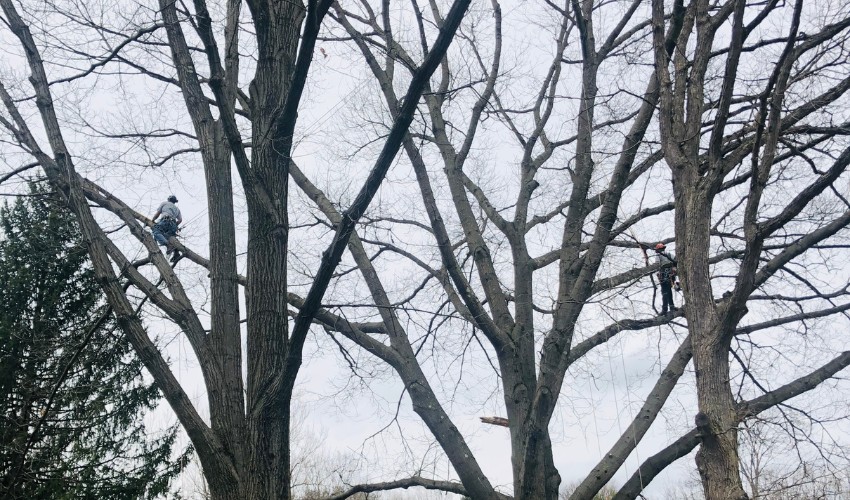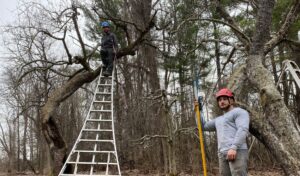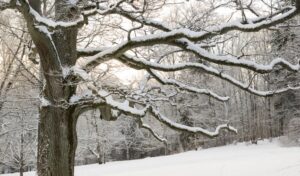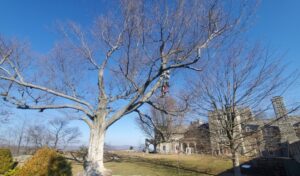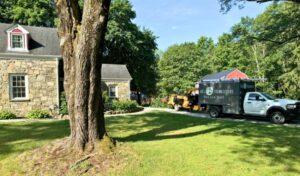
Have you ever looked up at your trees and wondered if they were getting a bit overgrown and could use pruning? You’re not alone! Knowing when to prune isn’t always obvious, but ignoring the signs can lead to bigger problems down the line.
If you’re unsure what to look for, here are some clear signs your Hudson Valley trees need professional pruning – and why getting it done regularly matters more than you think.
Key Takeaways
- Dead or diseased branches are the most critical sign that your tree needs immediate professional pruning to ensure safety.
- Storm damage from events like Tropical Storm Debby creates weak, partially broken branches that require preventive pruning before the next severe weather event.
- Trees growing too close to power lines, buildings, or other structures require professional pruning to prevent dangerous entanglements and property damage.
- Dense, overcrowded canopies with crossing branches need thinning to improve air circulation and light penetration.
- Winter dormancy is the best time for major pruning in the Hudson Valley, though light pruning can be beneficial in other seasons, depending on the tree type and specific goals.
7 Signs Your Tree Needs Professional Pruning in the Hudson Valley
While we often compare tree pruning to a haircut for trees, it is an even more important service than that metaphor may lead you to believe. Trimming trees is a necessary service that can keep them healthy for years to come.
Some of the most common signs to look for that indicate your tree could benefit from professional pruning include:
1. Dead or Diseased Branches Are Putting Your Tree at Risk
Tree pests and diseases in the Hudson Valley can destroy leaves and kill branches. Diseases can use one branch as a staging ground to spread to other parts of the tree or other specimens in your yard. Some of the signs your branch may be diseased include:
- The branch looks dead
- Leaf buds don’t break in the spring
- Leaves are discolored or damaged
- Leaves fall off the branch early
If you think your tree may have diseased branches, contact an arborist and have them inspect it. They may be able to help you by pruning the diseased branches and providing treatment for the tree.
PRO TIP: Pruning is just a small part of preventing tree diseases in the Hudson Valley.
2. Recent Storm Damage Has Weakened Your Tree
When a massive storm hits the area, it can topple trees and send branches flying, as we witnessed in 2024, when remnants of Tropical Storm Debby caused extensive damage in the Hudson Valley.
Even if a tree remains standing after a storm, it may have damage (such as broken branches) in the canopy that you’ll only notice if you look closely at it. When the next storm hits, these branches are more likely to break off and become dangerous projectiles.
Preventive pruning of these weak and broken branches can make your property safer and lower the risk of a flying branch damaging your home or injuring someone.
3. Branches Are Growing Too Close to Your Home or Power Lines
Trees face unique challenges growing in yards and urban areas, as they’re naturally adapted to forest environments. Unlike in the wild, where they have room to grow freely, urban trees often expand without regard for nearby structures – stretching into rooftops, fences, and utility lines.
Branches growing too closse to power lines or your home aren’t just inconvenient, they’re dangerous to prune. Pruning near live wires increases the risk of electrocution and requires coordination with utility companies to safely cut the power. And trimming too close to your house can result in heavy limbs damaging your roof, windows, or siding if they’re not properly controlled.
A Certified Arborist knows how to assess the risks, work with the right partners, and safely prune trees in tight or hazardous areas, protecting both your property and your tree.
4. The Canopy is Too Dense or Full of Crossing Branches
A tree should have a canopy full of healthy branches. But too much of a good thing can still be a problem for your trees. An overly dense and thick canopy can have negative consequences, such as:
- Competing Branches: There’s only so much room for branches to grow, and they will eventually begin to compete with each other if there are too many. These crossing branches will rub against each other and open your tree to diseases and pests. Removing one of the crossing branches will leave you with a single healthy branch rather than two potentially unhealthy ones.
- Lack of Air Circulation and Light Penetration: Airflow and adequate sunlight help reduce the humidity in a tree. A dense canopy creates humid conditions that can lead to mold and mildew development, harming the look and health of your tree. Selectively removing some of the internal branches gives your tree better overall health while leaving it balanced and with enough leaves for photosynthesis.

Fruit tree pruning can keep the tree more compact and allow more light to reach the lower branches.
5. Your Fruit Trees Aren’t Producing Like They Should
Growing fruit trees on your property is an excellent way to add value to your property. However, a consistent problem homeowners have with their orchards is low fruit production or poor-quality fruit. While there are many contributors to poor fruit production, one of the simplest ways to help is with fruit tree pruning.
Pruning at the right time will allow a tree to focus on growing better fruit. It can also allow more light penetration to the lower portions of the canopy, resulting in better-looking and healthier fruit on the lower sections of your tree.
6. Ornamental Trees Have Lost Their Shape or Beauty
Ornamentals, like dogwoods, blueberries, or rose bushes, pack a lot of aesthetic punch into a small package. They also require slightly different care than shade trees, such as different pruning timing, to avoid harming their beauty.
Pruning them after they bloom can help improve the tree’s structure and lead to better flowering in the following season. We recommend leaving ornamental pruning to professionals, as it is challenging to do correctly.
7. Young Trees Are Developing Structural Problems
Young trees often take more work than mature ones. That’s because proper care for young saplings includes consistent watering, mulching, and watching for signs of insect or disease problems. However, one of the most important things you can do for a sapling is to prune it regularly.
“The way you prune a young tree sets the stage for how it grows for the rest of its life. I’ve seen too many trees develop weak structures or split down the middle just because no one shaped them early on. A little thoughtful pruning when the tree is young can save you a lot of trouble – and money – later on.”
-Jadon Rodriguez, ISA Certified Arborist at Hill Treekeepers
Frequently Asked Questions About Tree Pruning in the Hudson Valley
To help you better understand the importance of pruning and how and why to do it, we’ve answered some common questions homeowners have about it.
Do different trees need to be pruned at different times of the year?
Yes, some species, like oak and elm, should only be pruned in winter to avoid disease. Others, especially ornamentals, may benefit from spring or post-bloom pruning. Knowing what type of tree you have is important in determining the best time to prune it.
When should I prune my trees in the Hudson Valley?
In most cases, we recommend leaving the most extensive tree pruning to the winter, when trees are dormant. However, that doesn’t mean you can only do it in the winter. There are benefits to trimming in each season, though you will want to keep pruning light when pests are most active and in the early fall before trees enter dormancy.
How much can I prune at one time?
In general, it is always better to keep pruning on the lighter side. Removing too many branches can lead to your tree struggling to get enough sunlight to perform photosynthesis. Trim no more than 25 percent of branches in one pruning session, though we recommend keeping it even lighter than that in most situations.
When Your Trees Need a Trim, Trust the Experts at Hill Treekeepers
Whether it’s a towering shade tree that’s outgrown its space or a young sapling you want to shape for long-term beauty, the right pruning makes all the difference. At Hill Treekeepers, our ISA Certified Arborists know how to prune without stressing or damaging your trees, and we tailor our approach to the unique needs of each species in the Hudson Valley.
We’ve helped homeowners across the region keep their trees healthy, safe, and looking their best year-round. Call us today at 914-214-7045 or request a quote online to schedule expert pruning with a team you can trust.
Share this online!
Get the highest quality of tree services for residential and commercial properties in the Hudson Valley area. We look forward to working with you!
TOPICS
Recent Articles
Don't Miss the Next Update!
Join the thousands of smart Hudson Valley residents who get the monthly newsletter from Hill Treekeepers. It's full of helpful information you won't want to miss!
